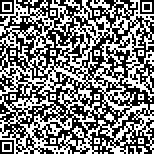下载中心
优秀审稿专家
优秀论文
相关链接
摘要

光学遥感是目前反演植被叶面积指数LAI(Leaf Area Index)的主要手段,但是当叶面积指数较大时存在光学遥感信息饱和、反演精度显著降低的问题。叶面积指数和平均叶倾角对光学、微波波段范围内反射和散射特性都有重要影响,主要表现在植被结构参数的变化可以引起冠层孔隙率和消光截面大小的改变。本文以典型农作物玉米为例,通过构建统一的PROSAIL和MIMICS模型输入参数,生成一套玉米全生长期光学二向反射率和全极化微波后向散射系数模拟库和冠层参数库。通过对模拟数据与LAI敏感性和相关性分析得出:(1)光学植被指数MNDVI(800 nm,2000 nm),在LAI为0—3时敏感,基于MNDVI与LAI的回归模型可以估算LAI变化 0.4的情况,RMSE是0.33,R2是0.958。(2)微波植被指数SARSRVI(1.4 GHz HH,9.6 GHz HV),在LAI为3—6时敏感,基于SARSRVI与LAI的回归模型可以估算LAI变化1的情况,RMSE为0.22,R2是0.9839。研究表明,采用分段敏感的植被指数,协同光学和微波遥感反演玉米全生长期叶面积指数是可行的。
At present, optical remote sensing is the primary way to retrieve vegetation Leaf Area Index (LAI). However, certainproblems, such as optical radiation saturation, cause low LAI reversion accuracy, especially when the LAI is large. The LAI and average leaf inclination angle are important factors affecting the reflecting and scattering characteristics of the canopy in the optical and microwave regions. Microwave remote sensing data has the potential to aid LAI retrieval to improve the problem of saturation in the optical region. In this paper, maize is used as a model system to analyze the feasibility of this method. The input parameters of PROSAIL and MIMICS were analyzed, and a unified model scene was constructed by unifying the parameters of the two models. Based on the coupled PROSAIL and MIMICS model, the parameter sensitivity analysis was conducted, and two vegetation indices that are more sensitive to LAI were proposed:MNDVI (800 nm, 2000 nm) in the optical bands, and SARSRVI(1.4 GHz HH, 9.6 GHz HV) in the microwave bands. The two vegetation indices are sensitive to different LAI levels. The optical vegetation index, MNDVI (800 nm, 2000 nm) , is sensitive to LAI ranging from 0 to 3. The RMSE and R2 of the regression model are 0.33 and 0.958, respectively, when the step of LAI change is 0.4. The microwave vegetation index, SARSRVI (1.4 GHz, 9.6 GHz) , is sensitive to LAI ranging from 3 to 6. The RMSE and R2 are 0.22 and 0.984, respectively, when the step of LAI change is 1. Based on our results, we conclude that it is feasible to retrieve the LAI by piecewise vegetation indices of MNDVI (800 nm, 2000 nm) and SARSRVI(1.4 GHz HH, 9.6 GHz HV) to couple the advantages of the optical and microwave bands.

